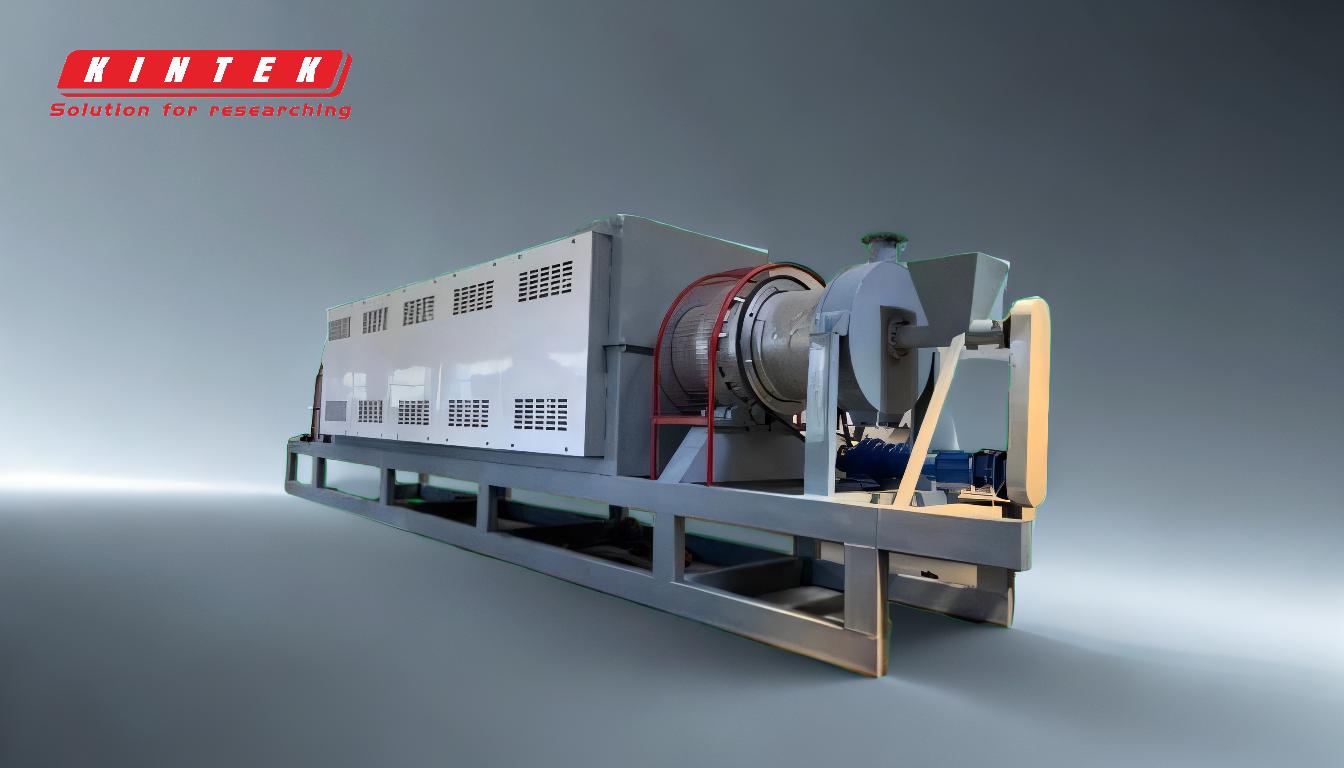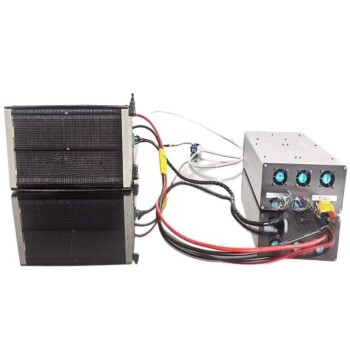Pyrolysis is a thermal decomposition process that occurs in the absence of oxygen, breaking down organic materials into solid, liquid, and gaseous products. While the primary focus of pyrolysis is often on the production of biochar, bio-oil, and syngas, the process does produce CO₂ as part of the non-condensable gases. However, the amount of CO₂ generated depends on the feedstock and process conditions. Pyrolysis is generally considered more environmentally friendly than combustion because it produces fewer greenhouse gases and can sequester carbon in the form of biochar. The CO₂ emissions from pyrolysis are typically lower than those from incineration or open burning, making it a preferred method for waste management and energy recovery.
Key Points Explained:

-
What is Pyrolysis?
- Pyrolysis is a thermochemical process that decomposes organic materials at high temperatures (typically 300–900°C) in the absence of oxygen.
- It produces three main types of products:
- Solid residue (biochar or carbon black): A carbon-rich material that can be used as a soil amendment, catalyst support, or activated carbon.
- Liquid products (bio-oil or pyrolysis oil): A mixture of organic compounds that can be refined into fuels or chemicals.
- Gaseous products (syngas): A mixture of combustible gases, including CO₂, CO, H₂, CH₄, and other hydrocarbons.
-
Does Pyrolysis Produce CO₂?
- Yes, pyrolysis produces CO₂ as part of the non-condensable gases.
- The CO₂ is generated from the breakdown of organic compounds in the feedstock, particularly from the decomposition of carbohydrates, lignin, and other carbon-based materials.
- However, the amount of CO₂ produced is relatively low compared to combustion processes because pyrolysis occurs in an oxygen-free environment, minimizing complete oxidation.
-
Factors Influencing CO₂ Production in Pyrolysis:
- Feedstock composition: Materials with higher oxygen content (e.g., biomass) tend to produce more CO₂.
- Temperature: Higher pyrolysis temperatures can increase CO₂ production due to enhanced cracking of organic compounds.
- Residence time: Longer processing times may lead to more complete decomposition, resulting in higher CO₂ yields.
- Reaction environment: The absence of oxygen limits CO₂ formation compared to combustion.
-
Comparison with Combustion:
- In combustion, organic materials react with oxygen, producing large amounts of CO₂ and other greenhouse gases.
- Pyrolysis, on the other hand, produces significantly less CO₂ because it operates in an oxygen-free environment, preventing complete oxidation.
- The carbon sequestered in biochar also reduces the net CO₂ emissions, making pyrolysis a more sustainable option.
-
Environmental Benefits of Pyrolysis:
- Carbon sequestration: Biochar produced during pyrolysis can store carbon in the soil for hundreds to thousands of years, reducing atmospheric CO₂ levels.
- Reduced greenhouse gas emissions: Pyrolysis generates fewer greenhouse gases compared to traditional waste management methods like incineration or landfilling.
- Energy recovery: The syngas and bio-oil produced can be used as renewable energy sources, displacing fossil fuels and further reducing CO₂ emissions.
-
Applications of Pyrolysis By-products:
- Biochar: Used in agriculture to improve soil fertility, water retention, and carbon sequestration.
- Bio-oil: Can be refined into biofuels, chemicals, or used directly as a heating fuel.
- Syngas: Used for electricity generation or as a feedstock for producing hydrogen and other chemicals.
- CO₂: While CO₂ is a by-product, it is often released in smaller quantities compared to other processes and can be captured and utilized in certain applications.
-
Examples of Pyrolysis Processes:
- Tyre pyrolysis: Produces pyrolysis oil (35–45%), carbon black (30–35%), steel wire (8–15%), and syngas (8–15%).
- Biomass pyrolysis: Yields biochar, bio-oil, and syngas, with CO₂ being a minor component of the gas fraction.
- Plastic pyrolysis: Generates pyrolysis oil, carbon black, and syngas, with CO₂ emissions varying based on the plastic type.
-
Conclusion:
- Pyrolysis does produce CO₂, but the amount is significantly lower than in combustion processes.
- The environmental benefits of pyrolysis, including carbon sequestration and reduced greenhouse gas emissions, make it a viable and sustainable option for waste management and energy recovery.
- By optimizing pyrolysis conditions and utilizing its by-products effectively, the process can contribute to reducing overall CO₂ emissions and advancing circular economy goals.
This structured analysis highlights the role of CO₂ in pyrolysis and its implications for sustainability and environmental impact.
Summary Table:
| Aspect | Details |
|---|---|
| Process | Thermal decomposition of organic materials in the absence of oxygen. |
| Main Products | Biochar, bio-oil, syngas, and CO₂. |
| CO₂ Production | Low compared to combustion; depends on feedstock and process conditions. |
| Environmental Benefits | Carbon sequestration, reduced greenhouse gases, and renewable energy. |
| Applications | Agriculture (biochar), energy (bio-oil, syngas), and chemical production. |
Discover how pyrolysis can reduce CO₂ emissions and enhance sustainability—contact our experts today!













